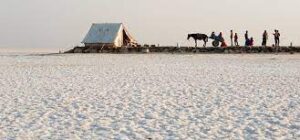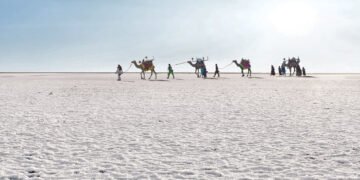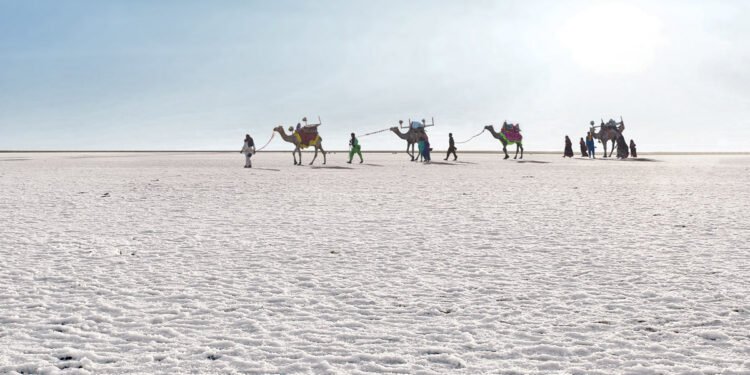Title: Rann of Kutch: Exploring the Wonders of India’s White Desert
Introduction:
In the far western reaches of India lies a unique and otherworldly landscape that captivates the imagination—the Rann of Kutch. Spread across the border of Gujarat and Pakistan, this vast salt marsh transforms into a surreal, almost extraterrestrial, expanse during certain times of the year. Often referred to as India’s White Desert, the Rann of Kutch is a marvel that beckons adventurers and nature enthusiasts alike.
Geography and Formation:
The Rann of Kutch is a seasonal salt marsh, one of the largest in the world, covering an area of about 7,505 square kilometers. During the monsoon season, the region becomes a shallow wetland, but as the rains recede, it leaves behind a vast, flat expanse of white salt crust. The ethereal beauty of this landscape is heightened during the winter months when the salt crystals glisten under the soft glow of the moon.
Great and Little Rann:
The Rann of Kutch is often divided into two parts: the Great Rann and the Little Rann. The Great Rann, located in the Kutch district of Gujarat, is the larger and more famous of the two. It stretches endlessly, creating an illusion of infinity as the salt plains meet the horizon. The Little Rann, situated further east, is a unique ecosystem that is home to the endangered Indian Wild Ass, making it a sanctuary for wildlife enthusiasts.

Rann Utsav:
One of the best times to experience the magnificence of the Rann of Kutch is during the Rann Utsav, a vibrant and cultural festival that celebrates the rich heritage of Kutch. This three-month-long extravaganza, usually held from October to February, showcases the traditional music, dance, crafts, and cuisine of the region. Tourists from around the world flock to witness the desert come alive with a riot of colors and cultural fervor.
White Nights:
One of the most enchanting features of the Rann of Kutch is the phenomenon of “White Nights.” During a full moon night, the salt crystals reflect the moonlight, creating an otherworldly spectacle where the entire desert seems to glow in a soft, silvery radiance. This celestial display adds a touch of magic to the already mesmerizing landscape, attracting photographers and stargazers alike.
Handicrafts and Culture:
The Kutch region is renowned for its vibrant handicrafts, and a visit to the Rann is an opportunity to witness the skilled artisans at work. The intricate embroidery, mirror work, and vibrant textiles produced by the local communities reflect the rich cultural heritage of the region. Visitors can explore traditional villages, interact with craftsmen, and purchase unique souvenirs to carry a piece of Kutch’s cultural legacy home.
Biodiversity in Little Rann:
The Little Rann, with its unique ecosystem, deserves special attention. As a sanctuary for the Indian Wild Ass, it offers wildlife enthusiasts a chance to witness this magnificent creature in its natural habitat. The stark contrast between the white salt plains and the diverse flora and fauna of the Little Rann creates a captivating tableau.
Adventure in the Salt Desert:
Beyond the cultural and natural spectacles, the Rann of Kutch offers adventure seekers a unique playground. The vast expanse of the salt desert provides an opportunity for activities like off-roading, desert safaris, and camping under the star-studded sky. The crisp air and the uninterrupted horizon contribute to an exhilarating experience for those seeking a bit of adventure in this mesmerizing landscape.
Conclusion:
The Rann of Kutch stands as a testament to the diversity and natural wonders that India has to offer. Its surreal landscape, especially during the transformation into the White Desert, is a visual spectacle that defies description. Beyond the salt plains, the cultural richness of the region adds depth to the visitor’s experience. The Rann of Kutch is not merely a destination; it is a journey into a realm where nature, culture, and tradition converge, creating an unforgettable tapestry of experiences.



















